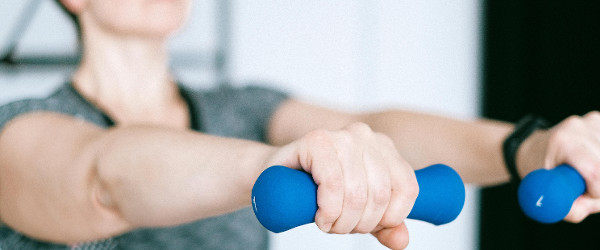Lymphedema is abnormal swelling of the arms, hands, breast, or torso. Breast cancer-related lymphedema generally occurs when the lymph nodes or the lymphatic vessels are damaged or removed following breast cancer treatment. When this happens, blockage in the lymphatic system prevents lymph fluid from properly draining which is what leads to the swelling.
There are certain risk factors that can lead to lymphedema following breast cancer treatment and a range of things that you can do to lower your risk of developing lymphedema. If you suspect that you may have lymphedema, it is important to be aware of the associated symptoms and treatments.
Below, you will find 3 exercises to do if you have been diagnosed with lymphedema following your breast cancer treatment. As with all exercises, please speak to your primary care team before engaging in any of these.
Arm Exercises for Lymphoedema from Cancer Research UK
Carla Zanichelli, a Lymphoedema Physiotherapist, walks viewers through exercises to manage lymphedema in their arms. These exercises can also be done to reduce your risk of getting lymphedema in your arm if you are at risk of developing lymphedema. Exercises using the neck, shoulders, arms, wrists and hands are introduced.
Equipment required: a stress ball or anything small that can be easily squeezed.
Exercises for Breast Lymphedema and Chest Swelling
In this video, Kelly Reed, a Lymphedema and Oncology Therapist, introduces various exercises that you can do to manage breast lymphedema, which causes swelling in the breast and chest area. Reed’s routine helps to get the lymph fluids moving out of a swollen area.
Equipment required: None. But wearing some type of compression is recommended.
Lymphoedema Awareness – Exercise Class from Breast Cancer Haven
Although this short exercise routine was developed to help lower your risk of developing lymphedema, don’t hesitate to do them if you already have lymphedema. These simple movements, ranging from straight arm raises to shoulder raises can all be done to help manage your lymphedema.
Equipment required: None.
Breast cancer-related lymphedema is not very well-known and is not be talked about as much as it should. We hope that these short and simple exercises can help you manage your risk of developing lymphedema or your symptoms, if you already have been diagnosed with lymphedema. While these exercises are good to do on a day-to-day basis, it is important to seek out assistance from a certified lymphedema specialist as they will be able to provide you with more information and management techniques. The Canadian Lymphedema Framework is a great places to start, as they provide information on provincial lymphedema associations.
Photo by Sriyoga Ashram on Unsplash







